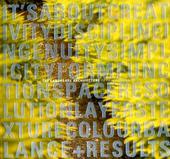
|
The Landscape Architecture of Paul Sangha
Hardback
Main Details
| Title |
The Landscape Architecture of Paul Sangha
|
| Authors and Contributors |
Edited by Oscar Riera Ojeda
|
| Physical Properties |
| Format:Hardback | | Pages:576 | | Dimensions(mm): Height 241,Width 260 |
|
| Category/Genre | Individual architects and architectural firms
Landscape art and architecture |
|---|
| ISBN/Barcode |
9789881225139
|
| Classifications | Dewey:712.092 |
|---|
| Audience | |
|---|
| Edition |
Unabridged edition
|
| Illustrations |
Illustrations, color
|
|
Publishing Details |
| Publisher |
Oscar Riera Ojeda Publishers Limited
|
| Imprint |
Oscar Riera Ojeda Publishers Limited
|
| Publication Date |
1 July 2017 |
| Publication Country |
Hong Kong
|
Description
The Landscape Architecture of Paul Sangha brings landscape to the foreground of daily life-as lifestyle, recreation, aesthetic pleasure-challenging notions of what one can gain from their outdoor surroundings. Sensuous, playful, and provocative, designs by Paul Sangha are meditations on the human relationship with landscape. Drawing on an encyclopedic knowledge of materials and botanical species as well as a deep unders- tanding of clients' habits and desires, works by Paul Sangha are robust systems for living.* The book presents ten residential projects by the award-winning Vancouver-based firm. The featured projects demonstrate the practice's expertise in orchestrating powerful, unique landscapes with spatial harmony, tactful grade changes, and vibrant plant life. An urban garden for a compact lot gracefully weaves the inside and outside to expand the space of both; a series of programmed terraces creates a staircase gradually descending from the residence to the wilds; and a cantilevered platform is an invitation into the canopy of an old-growth forest.* The Landscape Architecture of Paul Sangha documents the ins- piration, process, and poetry of Paul Sangha's designs. Coupled with text that vividly describes the details and design concepts, photographer Nic Lehoux sensitively captures each project, narrating through image the spellbinding experience of discovering gardens. This book reveals the inner-workings of a dynamic practice built on the notion that man can write himself in the land, and land can write itself in the man.
|